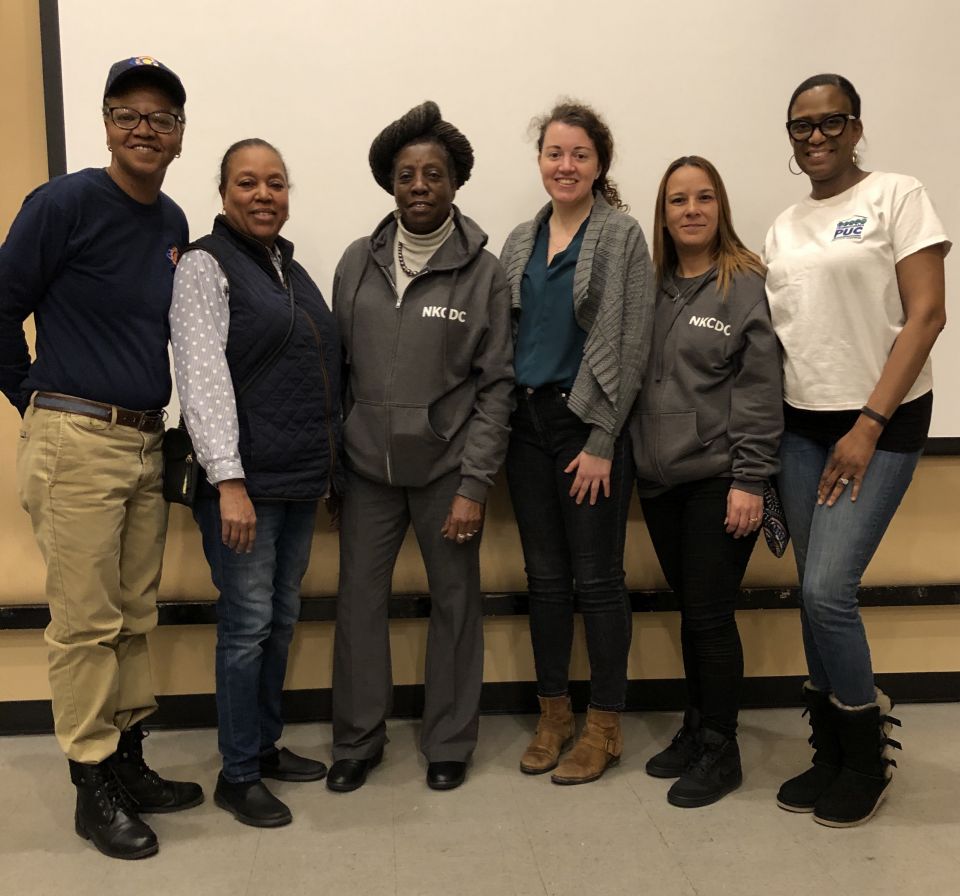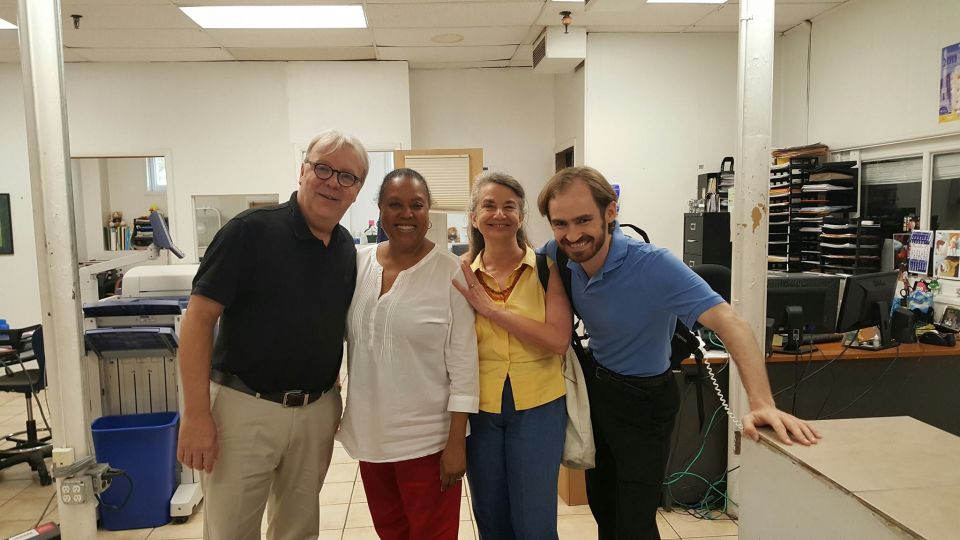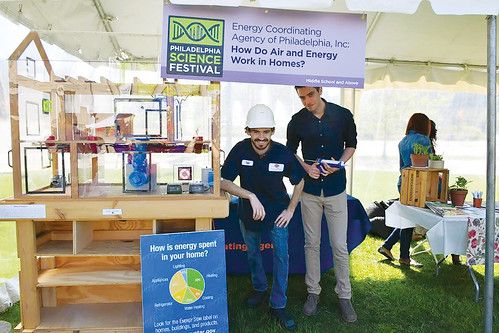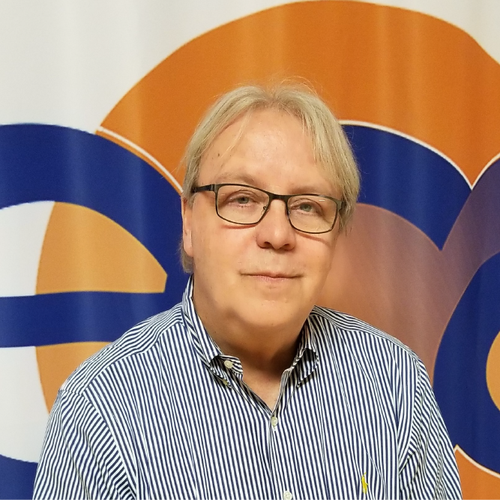For the Spring 2020 Energy Vulnerabililty Lab (a field school run by Alison Kenner at Drexel University) we invited five energy experts from Energy Coordinating Agency to speak with students about their work. Speakers talked in-depth about changes in the energy efficiency industry; the ins and outs of energy assistance work; the policies that got us to where we are today; innovating energy education workshops; and the history of ECA and the Neighborhood Energy Centers.
Each speaker was given a list of questions in advance and students asked questions to make the visits conversational. All visits were recording and transcripts are available for IRB approved researchers.

EXCERPT FROM TALK
Now, the thing about the behavior modifications, everyone has to participate. It can't be just the wife doing it, and the husband and the three kids don't care. Everybody's got to be on the same page. What I like to say in the PGW Workshops is now - well, it depends on the age of the child. You take water, you take a roll of quarters, and you go by the sink and you turn the water on. Every five seconds or so you drop a quarter. Because kids understand money, to me they understand it coming out the womb, because they don't even want quarters. You got two year olds asking for dollars these days. You take a quarter and they can hear that bing, and then five seconds later, bing, and five seconds later another bing. Then you say, "Baby, this is what it's costing mommy every time you play in the water." They get that.
SPEAKER BIO
Ms. McDuffie is the Director of Client Services at the Energy Coordinating Agency (ECA). She was invited to speak to the class about tactical and technical knowledge of the energy assistance programs, as well as to give an overview of the PGW and TAP workshops that she facilitates for ECA. Ms. McDuffie discussed home energy wastes and inefficiencies, home repairs, energy service organizations, utility companies, and the way it has all been impacted by COVID-19.
Guest Visit information: Zoom for SCTS 555 The Energy Vulnerability Field School, Tuesday April 28th, 6.30-9.20pm ET.
If you are an IRB-approved researcher on the Energy Rights Project, click here for a full transcript of the guest lecture by Ms. McDuffie.
QUESTIONS FOR MS. MCDUFFIE
1. When did you start working for ECA and have you always worked in ECA’s community programs office?
2. Can you tell us about the PGW workshops? How are they funded and what is the relationship between ECA and PGW? Do other organizations run PGW workshops as well?
3. Do you think the workshop model is a successful way to engage people on weatherization and energy assistance programs?
4. Can you walk us through the information of the PGW workshop? How about TAP?

EXCERPT FROM TALK
You really got to understand the programs and that's why the Neighborhood Energy Centers are so good because they know all the ins and outs of how to address a household. So when you walk in, the first thing they go on to know is, they're going to talk about safety issues; "Is your heater working? Do you have windows that are about to fallout? Is there anything that's unsafe in your house? Is there water coming in through your windows or through your roof or whatever?" And that helps them to direct the programs. It makes that household... As BJ always say, it makes the house whole.
SPEAKER BIO
Ms. Horton is the Director of Community Programs at ECA. She was invited to speak to the class to give an overview of ECA’s history, including the origins of the heater hotline program, and the mission of Community Programs. Ms. Horton also discussed energy assistance policy, community organizing, and the impacts of COVID-19.
Guest Visit Info: Zoom for SCTS 555 The Energy Vulnerability Field School, Tuesday May 12th, 6:30-9:20pm ET.
If you are an IRB-approved researcher on the Energy Rights Project, click here for a full transcript of the guest lecture by Ms. Horton.
QUESTIONS FOR MS. HORTON
1. When did you start working at ECA and what units have you worked in? [This is a background question I always ask guest speakers and in my interviews so that the audience knows a little about you!]
2. What does a typical day look like for you? What are your responsibilities at ECA?
3. What do you think are the main barriers to addressing energy vulnerability in Philadelphia?
4. Can you tell us about some of the different programs and funding mechanisms that ECA uses?
5. What other organizations does ECA’s community programs office work with? I know ECA participates in different events that often include the PUC, utilities, and other organizations -- what is your relationship to these organizations?
6. Does the Community Program office rely on any data sets for programming? Is there data/information that doesn’t exist that would help you do your work?
7. Can you tell us a bit about how COVID-19 is impacting the work that you do?
8. What would you change about how the current system is addressing energy vulnerability?

SPEAKER BIO
Mr. Flaherty is the Director of Marketing and Development at ECA. He was invited to speak to the class to give an overview of ECA and its history, and to discuss federal and state energy policy. Mr. Flaherty also discussed energy assistance policy, research, and the impacts of COVID-19. View Mr. Flaherty's Linkedin page here.
Guest Visit Information: Zoom for SCTS 555 The Energy Vulnerability Field School, Tuesday April 21st, 6:30-9:20pm ET.
If you are an IRB-approved researcher on the Energy Rights Project, click here for a full transcript of the guest lecture by Thomas.
QUESTIONS FOR THOMAS:
Can you tell us a little bit about ECA and what makes it unique and remarkable in the field of energy assistance? (Is that how ECA defines itself, within the field of energy assistance? Or some other sector?
What is your background and how did you first become involved with ECA?
What exactly does the Director of Development and Marketing do at ECA?
What does a regular day-to-day work look like for you, outside a health crisis scenario?
Are you directly involved in any of the training offered? If so, which ones and do you believe they have room for improvement?
What is the most common reason home weatherizations defer?
What is the most common intervention ECA makes on homes or in the communities it services?
What are the greatest challenges you have faced under the current health crisis as a Director?
What do you hope entities like ECA can take away from the current pandemic?
We recently read an article where many respondents of a study did not consider themselves energy vulnerable. Do you think the same applies to many people serviced by ECA?
EXCERPT FROM TALK
The final piece of the puzzle is about everything else we do, and not just what type of organization we are. There's only one other entity in the U.S. that combines provision of the weatherization program with running a jobs training center that offers accredited programming by the Interstate Renewable Energy Council that tests to the Building Performance Institute standards. So, we're one of two as far as that goes. And different from them, we have the NEC model, where we really believe in connecting to residents through independent neighborhood level institutions. And really meeting them where they are and through a group that they will trust, not the model of, "Okay, there should be an ECA branch on every corner."

EXCERPT FROM TALK
I think the main thing - and it's obviously repeated so much because it's something that we are constantly battling with - are the guidelines: that federal poverty level. The price of everything is going up, but wages aren't. So then as we keep on progressing, people are still not making more, but everything's going up and people can't afford it. That includes energy. So you have those people that they work, work, work, work, work, but they still can't make ends meet and they don't qualify for these programs because they're a household, and they make a couple dollars too much.
SPEAKER BIO
Ms. Santos is the Program Coordinator of Community Programs at ECA. She was invited to speak to the class to give an overview of ECA’s community programs. Ms. Santos discussed energy assistance policy, research, and the impacts of COVID-19. See her Linkedin profile.
Place of Engagement: Zoom for SCTS 555 The Energy Vulnerability Field School, Tuesday May 5th, 6:30-9:20pm ET.
If you are an IRB-approved researcher on the Energy Rights Project, click here for a full transcript of the guest lecture by Ms. Santos.
QUESTIONS FOR MS. SANTOS
1. When did you start working at ECA and what units have you worked in? [This is a background question I always ask guest speakers and in my interviews so that the audience knows a little about you!]
2. What does a typical day look like for you? What are your responsibilities at ECA?
3. What do you think are the main barriers to addressing energy vulnerability in Philadelphia?
4. Can you tell us about some of the different programs and funding mechanisms that ECA uses?
5. Can you explain some of the differences between NECs (I know there are fifteen of them)? They seem to be a variety of kinds of organizations.
6. Can you tell us about the differences between Hello Sign and Docu-Sign and what needs they’re addressing?
7. What other organizations does ECA’s community programs office work with? I know ECA participates in different events that often include the PUC, utilities, and other organizations -- what is your relationship to these organizations?
8. Does the Community Program office rely on any data sets for programming? Is there data/information that doesn’t exist that would help you do your work?
9. Can you tell us a bit about how COVID-19 is impacting the work that you do?
10 .Why are the NECs struggling right now?
11. Why have some NECs been able to open but others have not been able to open?
12. What would you change about how the current system is addressing energy vulnerability?

SPEAKER BIO
Mr. Luxton is the Executive Director / CEO of the Energy Coordinating Agency in Philadelphia. Under Steve's leadership, the mission-driven agency has taken on new opportunities in Delaware and South Jersey in addition to the vital services that his agency has delivered for many years in Philadelphia. He is a seasoned residential energy efficiency expert and has managed high performance/ high volume energy efficiency programs, supervised personnel working in both utility- and federally funded weatherization programs, all in pursuit of efficient high quality performance that enable the economically disadvantaged community members to save money and energy.
He was invited to speak to the class to give an overview of ECA and its history, and to discuss federal and state energy policy. Mr. Flaherty also discussed energy assistance policy, research, and the impacts of COVID-19. Visit Mr. Luxton's Linkin page here.
Guest Visit Information: Zoom for SCTS 555 The Energy Vulnerability Field School, Tuesday April 21st, 6:30-9:20pm ET.
If you are an IRB-approved researcher on the Energy Rights Project, click here for a full transcript of the guest lecture by Mr. Luxton.
QUESTIONS FOR MR. LUXTON
1. Can you tell us a little bit about ECA and what makes it unique and remarkable in the field of energy assistance? (Is that how ECA defines itself, within the field of energy assistance? Or some other sector?
2. What does the executive director do at ECA?
3. What has your personal career trajectory been, and how did you come to lead ECA?
4. In the wake of the COVID19 pandemic, I’ve realized that I don’t know as much about how ECA is funded as I thought. Can you tell us about how organizations like ECA fund themselves, particularly the timeframes for funding?
5. What have been some of the biggest developments in energy assistance policy over the last 10-20 years?
6. What have been some of the biggest developments in energy efficiency technologies for households over the last ten, twenty, to thirty years?
7. Have new technologies helped everyone, or just more affluent and knowledgeable consumers?
8. How does interacting with different governing bodies [state/local] and the regulations related to them impact the work that you do? In what way does this complicate or impede providing assistance to people in different municipalities?
9. Are there any bills or proposals on the table, yet to be adopted, that would impact the work that your organization currently executes?
10 . Are there local or regional organizations that you partner with in order to meet the energy needs of low-income households?
11. In the Philadelphia area, is there a common, repeated narrative around energy poverty? What communities have the greatest energy service need and is this concentrated in specific locations or among distinct demographics?
12. What are the greatest barriers to helping low-income households with their energy needs?
13. Only, roughly, 20% of those eligible for assistance programs actually receive such assistance. Why do you believe that is?
EXCERPT FROM TALK
If your house exchanges air once every three hours, as opposed to once every hour, which is how we equate air leakage, then your thermostat is going to go on 66% less of the time or less time than a normal thermostat will go on, which when it's 30 degrees out, it goes on every 12 minutes. The houses I looked at in Nebraska, because they're so air tight and not bleeding indoor air out, it might go on every hour. And that shows up on the energy bill, which makes homes very affordable from an energy perspective. And that's all it takes. Quality construction, add some insulation and some decent windows and make sure it's properly installed. And wow, you don't really need anything more than that. You can put LED lights in it, little things. But the big impact is air tightness, what its air change rate is and its resistance to thermal conductivity. Those two basic things are as good as you can get. And it doesn't cost a lot of money to do that. You're going to have a super energy efficient house in comparison to like a 50 year old colonial house in Pennsylvania.